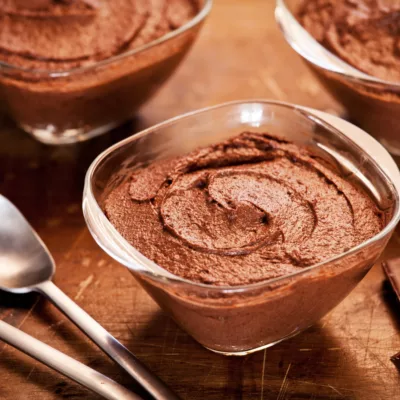Historically, salt has been used as a food preservative and as an ingredient to enhance taste. Fortunately, we’ve moved past the need to only use salt as a preservation tool. However, it is still very much used to improve the taste of our foods. Salt makes food taste better by enhancing and balancing flavours and creating that moreish taste that consumers love. Ever tried stopping after just one potato chip? It’s almost impossible, and salt is part of the reason for that addictive flavour.
But despite being delicious, many experts and food authorities warn that excess consumption of salt can cause health problems – and in line with this, consumers are becoming more concerned about salt in their diets. In this article, we’re going to look at how salt impacts our health, outline what to consider when you want to reduce the salt content of a product and show how using yeast extracts is one way to approach this challenge.
How Does Salt Impact Our Health?
We all need salt in our diets, although many people are consuming far beyond the recommended daily intake of salt. Excess salt consumption is a growing public health concern. Research shows that it raises blood pressure, and increases the risk of heart disease, stroke and kidney disease 1. Department of Health (VIC) estimates suggest that about 75% of the salt in our diets comes from processed foods – meaning many people don’t know how much sodium they’re actually consuming 2.
As more information comes to light on the dangers of excess salt consumption, food authorities and manufacturers around the world are slowly starting to take action. The Australian and New Zealand governments recommend adults consume the equivalent of around 2,000mg of sodium per day – the equivalent of about 1 teaspoon of salt. The Dietary Guidelines for Australian Adults and the Eating and Activity Guidelines for New Zealand Adults are also advising consumers to choose foods lower in salt. Because of efforts like this, consumers are starting to become better educated about the health benefits of reducing their sodium intake.
FSANZ defined a ‘low salt’ food as one with a sodium concentration of no more than 120mg per 100g, and a ‘reduced salt’ food must have at least 25% less sodium than the comparative reference product 3.
While reducing salt content to make ‘low salt’ or ‘reduced salt’ claims can be complex, it also comes with a host of benefits. It helps to position your product as a healthier option, and it may help to improve your ‘Health Star Rating’, which can demonstrate a willingness to put the health of your consumers first.

Manufacturing Challenges
Traditionally, salt has been used to help aid food preservation, to improve texture in bread and processed meats, to assist in fermentation control in dairy and bakery, and of course to season and enhance the flavour of many foods.
As interest in salt reduction rises amongst consumers, manufacturers are looking to reduce the salt content in their existing formulations. Where salt is being used for functional benefits, this challenge may be more complex as you need to ensure that food safety isn’t being compromised. However, when salt is being used primarily for flavour enhancement there are many options that can provide the same functionality as salt. Improving taste perception, reducing bitterness and increasing sweet and sour profiles can all be achieved without salt.
Processed foods are typically higher in salt, and certain foods are particularly notorious for their higher salt contents:
- Sauces
- Seasonings
- Ready Meals
- Can and Pouch Soups
- Processed Meats
- Plant-based Meats
As noted previously, reducing salt can be quite a complex process given that salt provides so much flavour in products and is a cheap commodity ingredient. As consumer acceptance of products heavily relies on flavour, it can be difficult for salt-reduced products to maintain palatability without flavour intervention.
Yeast extracts are natural solutions in a developer’s toolbox for salt reduction, as they enhance the savoury & umami notes within a product.
Yeast Extracts to the Rescue
We all know that taste is king! Flavour and taste acceptability plays a huge role in food choices and will generally determine repurchase decisions. Given this, it’s critical that salt reduction is considered carefully.
How to tackle salt reduction is the choice of the developer. A gradual decrease of salt over time is well advised, as it allows your consumers to adapt to the gradual reduction of salt without rejecting the product’s flavour. Yeast extracts are natural solutions in a developer’s toolbox for salt reduction, as they enhance the savoury & umami notes within a product.
Yeast extracts are produced with a simple production process and without any chemical additives. Depending on the yeast ingredients and process used, yeast extracts can deliver various benefits to a salt-reduced formulation.
Boosting the umami perception, balanced flavour & enhanced mouthfeel
- Naturally umami-rich yeast extracts give products a savoury and balanced, rounded flavour profile, and are a brilliant tool to increase the salty perception.
- Umami, known as the 5th taste, also helps to boost the overall flavour profile of the product. Using high-umami content yeast extracts allows food manufacturers to reduce salt content by up to 30%, without compromising on taste.
Building and enhancing naturally occurring flavours
- In addition to salt reduction, yeast extracts can help developers build specific savoury flavours with targeted flavour notes including meaty, cheesy, vegetable, grilled & roasted profiles.
Clean label solutions
- Yeast extracts can also provide a clean-label solution, offering additive-free and preservative-free ingredients.
- Depending on your supplier, they can also be GMO-free, animal-free and Halal and Kosher certified.
How Hawkins Watts Can Help
Hawkins Watts are your partner in salt reduction solutions. We are proud to supply Biospringer yeast extracts – the world’s leading natural yeast extract provider. Founded in 1872, Biospringer’s innovative and natural ingredients help to make food tastier and healthier.
With a team of qualified food technologists and food scientists, the Hawkins Watts team can work together with your development technologists in our in-house labs, supporting your technical projects.
For detailed information on how to use yeast extracts to achieve salt reduction, download this white paper from Biospringer.
Sources
- https://www.healthdirect.gov.au/salt
- https://www.betterhealth.vic.gov.au/health/HealthyLiving/salt
- https://www.foodstandards.gov.au/consumer/nutrition/salthowmuch/Pages/default.aspx




